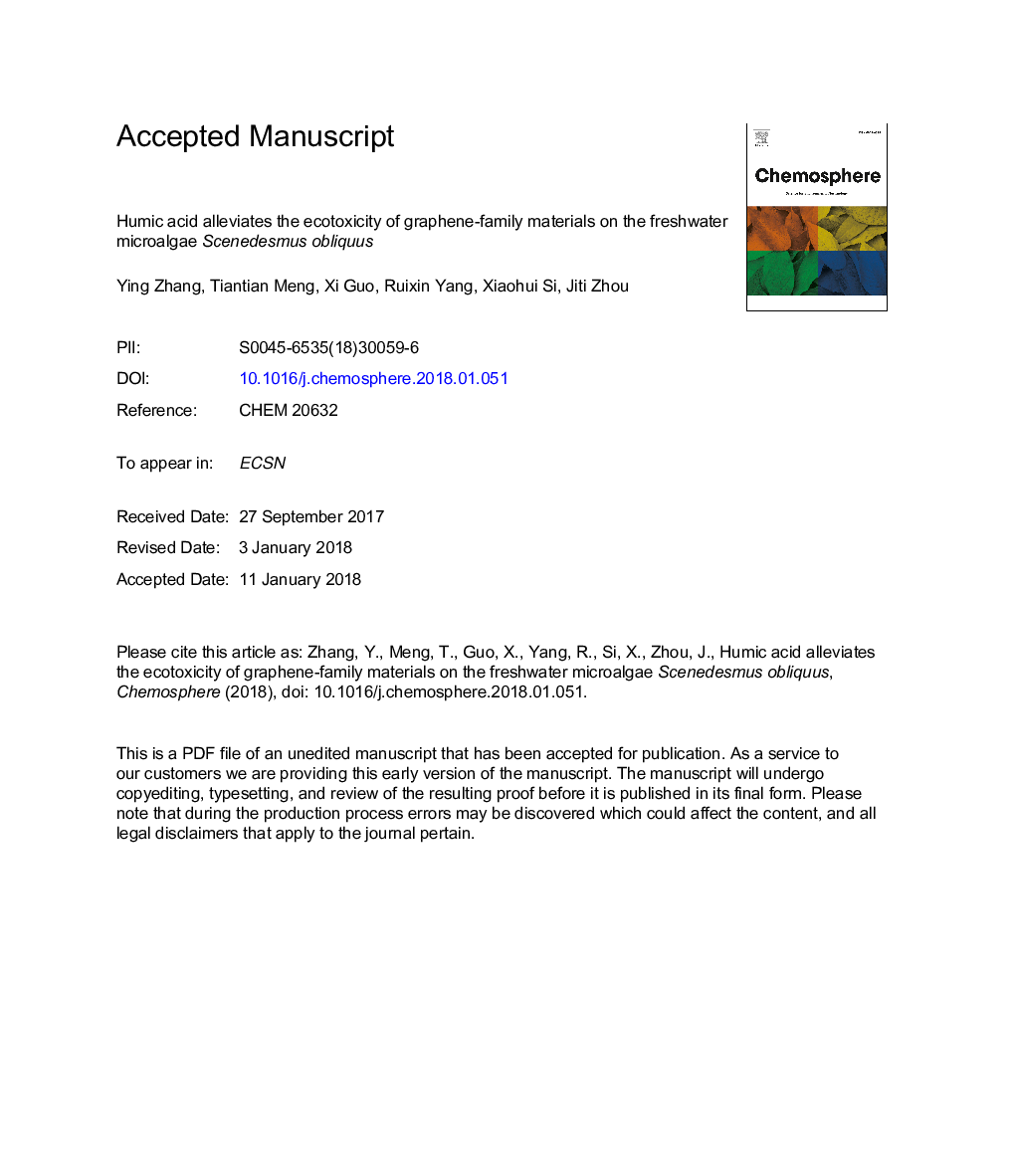| Article ID | Journal | Published Year | Pages | File Type |
|---|---|---|---|---|
| 8852045 | Chemosphere | 2018 | 33 Pages |
Abstract
The extensive application of graphene-family materials (GFMs) has increased its potential risk to aquatic organisms. However, the influence of humic acid (HA) on the biotoxicity of GFMs has not clarified. Here, we conduct a study on the toxicity of four GFMs, i.e. graphene (G), graphene oxide (GO), carboxyl-modified graphene (G-COOH) and amine-modified graphene (G-NH2), with or without HA, using Scenedesmus obliquus (S. obliquus) as model organism. Our results showed that the four GFMs induced significant inhibition on cell growth and Chlorophyll-a (Chl-a) synthesis, loss of cell viability and membrane integrity as well as mitochondrial membrane potential (MMP), where G exhibited the highest toxicity with median effect concentration (EC50) of 8.2â¯mgâ¯Lâ1, and G-NH2 exhibited the lowest toxicity with EC50 of 84.0â¯mgâ¯Lâ1. Meanwhile, HA mitigated the toxicity of GFMs in the order of G-NH2â¯>â¯G-COOHâ¯>â¯GOâ¯>â¯G for the most of endpoints. Furthermore, three possible mechanisms of the HA alleviation on toxicity were speculated as: (1) reduce the contact of GFMs with algae cells through regulating the structures and surface negative charges of GFMs; (2) mitigate physical penetration and damage through decreasing the deposition of GFMs on cells by interacting with HA; (3) react as an antioxidant with intracellular reactive oxygen species (ROS) and extracellular hydroxyl radical (OH). This work provides useful information for the environmental toxicity of GFMs and the possible antidotal mechanisms in the presence of HA, which could aid to avoiding the overestimation of potential risk of GFMs in natural aquatic environment.
Related Topics
Life Sciences
Environmental Science
Environmental Chemistry
Authors
Ying Zhang, Tiantian Meng, Xi Guo, Ruixin Yang, Xiaohui Si, Jiti Zhou,
